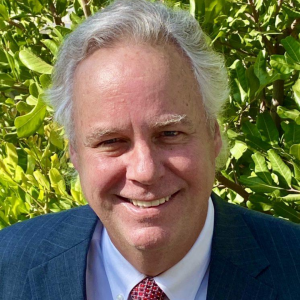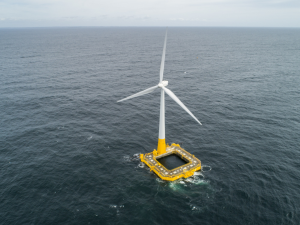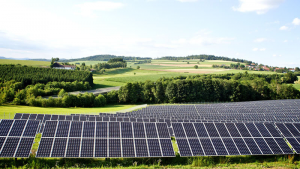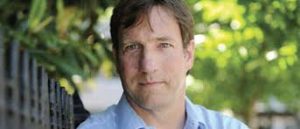In This Issue
- Flanigan’s Eco-Logic: LBJ’s Climate Briefing
- Offshore Wind “Floaters” Poised
- Oregon is Now Coal-Free
- Green Hydrogen in the West
- Renewables Outpacing Coal and Nuclear
- Tidal Power Turbines
- Psychological Resilience, Biophilic Design
- The Swift and Fair Energy Transition
- EcoMotion Selected by Clean Power Alliance

Flanigan‘s Eco-Logic: LBJ’s Climate Briefing
Dr. David Orr of Oberlin College turned to history the other day in a UCLA presentation: He pointed to the reality that America has been aware of the imminent threat of climate change since the days of Lyndon B. Johnson, President of the United States from 1963 – 1969. It was during his presidency, that our federal government was first warned about the climate threat, that it could become an existential threat, potentially more devastating than nuclear weapons.
Orr drilled home this point: America has had more than a half century to make real changes and to protect our country from the threat of climate change, from the events that we are now experiencing in fire, flood, hurricane, and tornadic activity in increasing frequency and ferocity. Orr pried with force, “Why didn’t we act sooner?” “We could have reacted a long time ago.” “Now, this is a five-alarm fire.”
In terms of our atmosphere, we are passing a dysfunctional planet to our children. Does our freedom include the right to pollute the commons? Would America’s founding fathers have crafted a different constitution if they had had even a basic understanding of earth sciences? These insights from a UCLA Luskin and Burkle Center webinar: The National Security Imperative for Climate Action.
There is no question about the threat of climate change; the science is irrefutable, says U.S. Navy Admiral William Fallon, now retired after a career that literally spanned the globe. Speaking optimistically, we’re cutting a climate recovery pretty darn close: Keeping the average global temperature rise to 1.5 degree C above preindustrial levels is going to be monumental. We need to get there, and fast. We’ve already given up one degree. At two degrees “all bets are off” on what our life on Earth will look like. Three to four degrees of average global temperature rise would be intolerable, setting off a series of cascading and devastating events, floods, fires, food and water shortages, pandemics… economic and government collapse.
There are many reasons that the United States and other industrialized nations did not take action to protect our climate. There was no Plan B for the chance – now the reality – that the atmospheric scientists led by James Hansen were right. This is a threat of grotesque proportion. So, we are penalized for inaction… a half-century of inaction on a threat potentially greater than the wrath of the use of nuclear weaponry.
Phew…. Deep breaths. Darn it, this was indeed on the radar a long time ago. There is little point looking in the rear-view mirror. Instead, it’s time for accelerated action. It’s surge time for your own well-being and the well-being of the planet. Good news: The pace of clean energy development is impressive. The progress is palpable and contagious. That’s what EcoNet is all about… flagging and highlighting solutions, especially scalable solutions that make economic and environmental sense, fueling the invisible fires of eco-logic.







